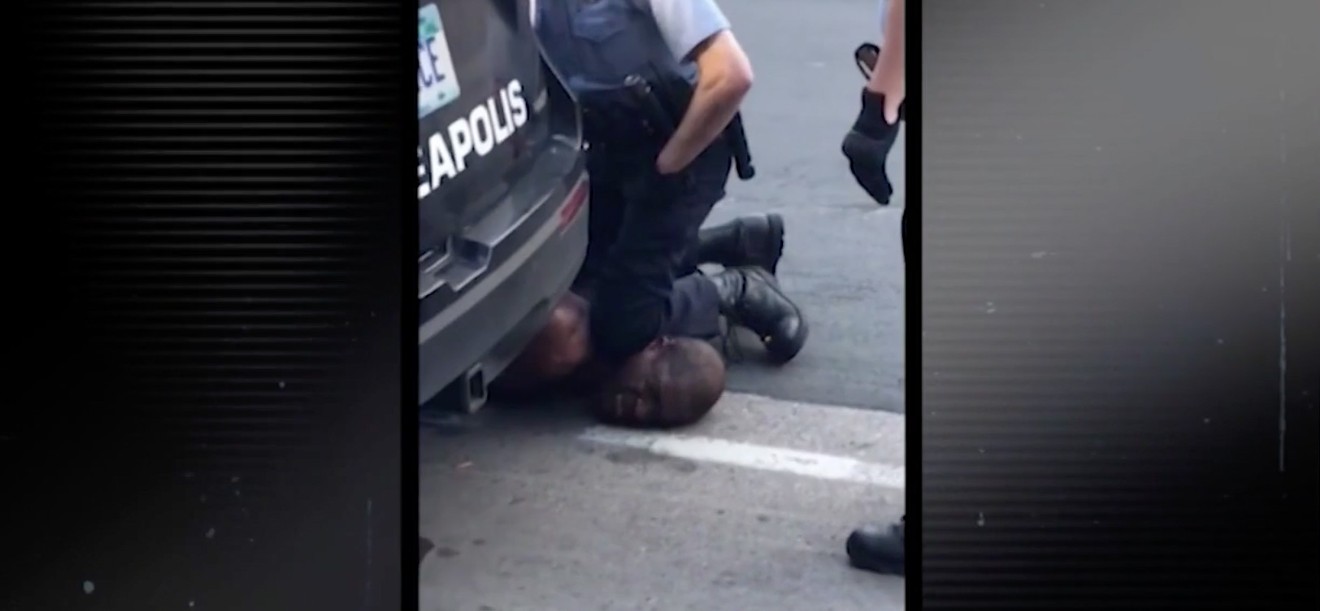For eight minutes and forty-six seconds, native Houstonian George Floyd was suffocated by police officers in Minneapolis. It has become not only a brutal reminder of the inequality faced by black people every day in America, but a seminal moment in our country's history, one that appears to be a legitimate turning point in what we want our society to be.
It led to massive protests, evolving laws relating to policing and, if polling is to be believed, a sea change in how Americans view social justice issues and race in general.
But, none of it may have happened if the final, excruciating and nearly impossible-to-watch moments of Floyd's life weren't captured by digital video.
From scenes of protest to streaming services to conference calls for people trapped at home during the pandemic (remember that?), 2020 is, without question, the year of digital video.
The Rise of Zoom
No one could have imagined in December that many businesses would send workers home in the midst of a pandemic and, largely, keep them there. People have been using teleconferencing technology for a while, but not close to this scale. Enter services like Zoom and, to a slightly lesser extent, Microsoft Teams. Suddenly, meetings reserved for conference rooms could be held in bedrooms a few miles to a few continents away from the office.
Zoom blew up with thousands and thousands signing up for the free service (you can get 40 minutes without paying, but need a subscription for more time) to talk to bosses, clients and coworkers. But, something unexpected happened. With millions of people trapped at home during quarantine, Zoom became a lifeline for friends and family as well — more versatile than Face Time and far more intimate than a phone call. The Zoom Happy Hour became a real thing as friends toasted each other from a social distance. Dates went virtual. And homebodies could try to stamp out loneliness with a virtual call to a friend.
Streaming Entertainment
While trapped at home, often with little work, people had to find something to do. Sure, bike sales soared and garden/home stores found new markets with anyone trying to develop a new hobby or a way to stay busy, but entertainment became almost the sole domain of streaming services like Netflix, Hulu, Amazon, Disney Plus and others. Movies, which couldn't show in theaters, went direct to digital and people ate it up.
Disney's launch into the market could not have come at a better time. With kids sequestered from school, the access to endless hours of cartoons and kid-friendly content was certainly a boon to parents even if they may never be able to get the songs from Frozen 2 out of their heads (until Hamilton hit last week anyway). If we thought we binge watched before, we had no idea how many episodes of Ozark we could cram into a single weekend (all of them is the answer).
With no sports, no live music, no new TV shows on networks and movie theaters shut down, suddenly the sole source of visual stimuli for many became shows streaming through an internet connection.
TikTok's Time
There are always changes in social media preferences, particularly among young people constantly searching for the latest way to share online. This year, it's TikTok and it's all video. The video sharing service is more versatile than SnapChat (the last, best thing) and has tools that allow for more wide sharing of videos. The fact that the company that built it is based in China may be making American officials uncomfortable, particularly after China banned a number of services in its crackdown on Hong Kong, but it is extremely popular among a wide set of young people and has absolutely dominated video sharing throughout the pandemic and protests.
It's also extremely entertaining if you've never taken a peek.
From Protests to Karens, Camera Phone Videos Have Changed Everything
In the '60s, protesters chanted "the whole world is watching" as police beat anti-war demonstrators in Chicago. They were standing in front of news cameras taping the scene. The most recent protests didn't need tape delay or even news cameras. Women flipping out in grocery stores over mask requirements, a dog walker threatening to call police on a black bird watcher in Central Park and hundreds of rolling images of police overreach at protests have dominated the news and given outsiders a lens through which to see an evolving world.
This is possible because nearly every phone has a digital camera capable of recording video and direct connections to social media services where they can broadcast live or publish videos taken on the streets in real time. The first, that terrible video of Floyd, was not the first video of its kind to hit the internet, just the one that finally seemed to change everything. Hopefully, the reforms that come as the result of that video will mean fewer of them in the future.
And we have someone's cell phone to thank.
Support Us
Houston's independent source of
local news and culture
account
- Welcome,
Insider - Login
- My Account
- My Newsletters
- Contribute
- Contact Us
- Sign out

The tragic George Floyd video underscored the importance of digital video in 2020.
YouTube Screenshot
[
{
"name": "Related Stories / Support Us Combo",
"component": "11591218",
"insertPoint": "4",
"requiredCountToDisplay": "4"
},{
"name": "Air - Billboard - Inline Content",
"component": "11591214",
"insertPoint": "2/3",
"requiredCountToDisplay": "7"
},{
"name": "R1 - Beta - Mobile Only",
"component": "12287027",
"insertPoint": "8",
"requiredCountToDisplay": "8"
},{
"name": "Air - MediumRectangle - Inline Content - Mobile Display Size 2",
"component": "11591215",
"insertPoint": "12",
"requiredCountToDisplay": "12"
},{
"name": "Air - MediumRectangle - Inline Content - Mobile Display Size 2",
"component": "11591215",
"insertPoint": "4th",
"startingPoint": "16",
"requiredCountToDisplay": "12"
}
,{
"name": "RevContent - In Article",
"component": "12527128",
"insertPoint": "3/5",
"requiredCountToDisplay": "5"
}
]
KEEP THE HOUSTON PRESS FREE...
Since we started the Houston Press, it has been defined as the free, independent voice of Houston, and we'd like to keep it that way. With local media under siege, it's more important than ever for us to rally support behind funding our local journalism. You can help by participating in our "I Support" program, allowing us to keep offering readers access to our incisive coverage of local news, food and culture with no paywalls.
Jeff Balke is a writer, editor, photographer, tech expert and native Houstonian. He has written for a wide range of publications and co-authored the official 50th anniversary book for the Houston Rockets.
Contact:
Jeff Balke
Trending News
- Op-ed: HISD’s Wild West of Dyad Electives
- Four Thoughts on the Houston Texans 2024 Schedule
- Boeing’s Crewed Test Flight Won’t Be Flying This Week
-
Sponsored Content From: [%sponsoredBy%]
[%title%]

Don't Miss Out
SIGN UP for the latest
news, free stuff and more!
Become a member to support the independent voice of Houston
and help keep the future of the Houston Press FREE
Use of this website constitutes acceptance of our
terms of use,
our cookies policy, and our
privacy policy
The Houston Press may earn a portion of sales from products & services purchased through links on our site from our
affiliate partners.
©2024
Houston Press, LP. All rights reserved.





